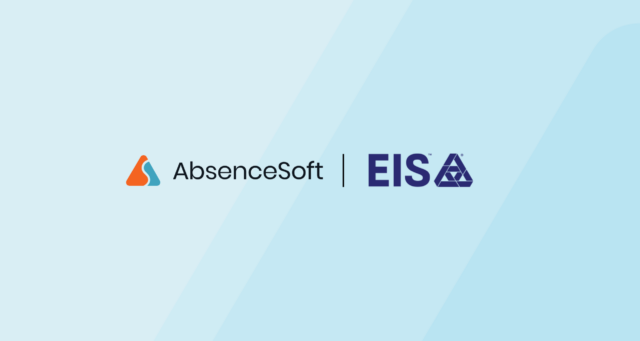


Everyone knows that hiring the right candidates is seriously everything. For most businesses, recruiting and successfully hiring the very best candidates for open positions is permanently at the top of their priority list (because it’s not like the rest of the priority list is going to get taken care of without an amazing team to execute it). While most people might not immediately think of leveraging a company’s leave policies for recruiting and hiring, leave it to us — we’ll admit it: we always have employee leave on the brain — to point out exactly how critical it is.
It’s a short, simple story: If you want to hire the best, you’ve got to come to the table with your best. And that doesn’t just mean your best salary offer. The truly top-shelf talent out there? They’re interested in a lot more than the dollars on their paycheck. They want to know how a job would potentially intersect with the rest of their lives. They want to know what living with a job would be like for them if they accepted a position at your company. The best candidates are way beyond just looking at the scope of work for a role and the salary it comes with: They’re looking at the entire experience of working for a company. And there are a lot of boxes that need checking if they’re going to accept an offer.
So you’ve likely already put a tremendous amount of time and effort into developing employee leave policies that you’re proud of — here’s how to activate them for your recruiting efforts.
Job candidates are more interested in landing a job with amazing paid leave benefits, which means they’re likely to ask more questions about them. And when we say “questions”, we’re talking about more than just the standard “how many weeks of vacation do you offer?” Whether you’re recruiting for open roles using in-house recruiters or an outside agency, make sure that the people speaking to candidates on behalf of your company are equipped with more than the broad strokes of your leave policies — give them all the details.
Sure, you might not get into the nitty-gritty with candidates until much further down the pipeline when you’re hovering around the finish line, but given the candidates’ generally elevated focus on leave benefits right now, you should prepare for more granular questions even on initial screener calls.
It’s one thing to have an immaculate slate of leave benefits to entice the best candidates, but if the way your company actually manages its employee absences isn’t just as pristine, trust us, that word will definitely get around and hurt your hiring prospects. Candidates are no longer just looking for the sweetest comp package from a potential new job — they’re approaching their job search with an emphasis on discerning what it would actually be like to work at a given company. If you have generous, flexible leave policies, but aren’t super buttoned-up about executing them in real life, and current employees are having bad experiences with their own leaves of absence, you can almost guarantee that prospective hires are going to hear about it.
This is something we talk to our customers about all the time: investing in better leave management is essentially an investment in some of the most valuable word-of-mouth your company can get on the recruiting side.
The recruiting and hiring process can be such a grind. Whether you’re hiring for two positions or a hundred, you’re going to end up talking to a lot of prospective candidates. Since you’re inevitably going to speak to infinitely more candidates than you actually hire, it’s nice to squeeze as much value out of those calls as possible. Our best tip for this? Just listen to what people are saying. A well-executed call with a candidate is at least as much about how well you listen, and what you do with the information you hear, as it is about what you say about the role and the company. The kinds of questions candidates ask, how they ask them, the order in which they ask them, and even what they don’t ask, will tell you a lot about their priorities and concerns. What you hear from the candidates you talk to today can turn into your cheat sheet for how to hit the mark with the candidates you talk to tomorrow. But you already know that. Of course your recruiters are listening to what candidates say and adjusting their approach accordingly. That’s basic, right?
Maybe. But what too many companies don’t do is socialize the takeaways and insights from candidate calls beyond the recruiting team. How can those learnings be synthesized throughout other parts of the company to generate changes that might make your workplace the one that the top candidates are clamoring to work for? For instance, if recruiters are fielding questions from half the candidates they talk about a particular benefit that you don’t currently offer, that info is massively actionable. Making sure that you have a workflow in place that gives key stakeholders beyond recruiting access to the notes and learnings from the candidate pipeline will ensure that you’re getting the absolutely most juice for the squeeze from your hiring efforts.
If you’re talking to a candidate and they express an interest in your leave policies (or anything else in the HR wheelhouse), don’t hesitate to add a call with someone from the HR team to the roster of interviews they’ll have! Acknowledging that the candidate is vetting your company as much as you’re vetting them is a strong move — it establishes mutual respect and a more equal power balance about the conversation you’re having about potentially working together. It also gives the people managing your employee absences a chance to get to know employees before they even start working there.
If nothing else, we’re big believers in showing up to the leave management process as human beings, first and foremost. Building strong relationships between your HR team and the employees whose work lives they’re tasked with supporting is the best way to do that — and there’s no reason not to start during the hiring process.
This might be the most crucial point out of all of this: leave policies are not really “set it and forget it” things, at least not if they’re any good, and definitely not if they’re going to give your company a competitive edge in the market of job candidates. A truly exceptional paid leave policy is one that reflects the current needs and expectations of workers — and those are constantly changing. All the listening and learning you’ve been doing during the hiring process? Let it actually inform the evolution of your leave policies.
As your leave policy evolves, don’t hesitate to share changes publicly! You might think that no one outside your company cares that you made a change to your policies, but hey, we’re fans of any opportunity to demonstrate your company’s best behavior. If you really want to establish your company as a workplace worth getting onboard with, nothing helps like a little bragging on social media that not only do you have a killer leave policy, but you’re perpetually examining and evolving how you support employees. From a brand image standpoint (and in recruiting, make no mistake, brand image is at least half the battle), the value of getting to tell everyone that you’ve, let’s say, added paid leave for employees undergoing fertility treatments will likely far outweigh whatever it costs you.